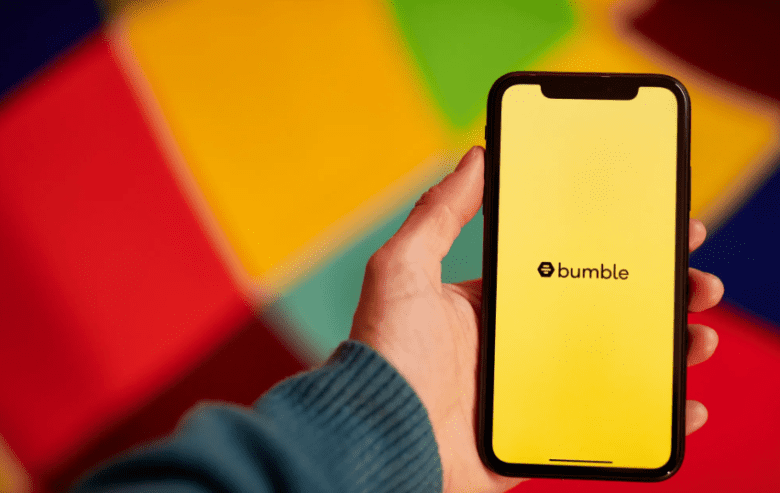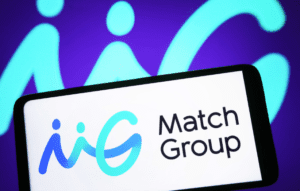In Q3 2025, U.S. dating-app usage slips by 7% year-over-year, according to a recent mobile-app data snapshot from analytics firm Apptopia. This snapshot from analytics firm Apptopia reveals a turning point in the once-dominant online dating space. While swiping for love isn’t going away, how Americans engage with these platforms is changing—and fast.
This article is your all-in-one insight into the top dating app platforms, evolving user behavior, and key market forces influencing the decline. Whether you’re a brand, investor, or just curious about the 2025 dating trend, this breakdown will give you the full picture.
Why U.S. Dating App Engagement Is Falling in 2025
Across the United States, the time people spend on dating apps is declining. According to Apptopia’s report, apps have declined in three of the past four quarters, culminating in this 7% year-over-year decline in Q3 usage. While active users remain high, their engagement—measured by time spent—is slipping.
This trend reflects larger issues:
- Digital burnout from repetitive swiping
- Frustration with ghosting and superficial connections
- Rising concern over privacy, safety, and authenticity
- The emergence of platform fatigue: hopping from app to app without satisfaction
The “Date Fatigue” Phenomenon: Are Users Just Over It?
Many younger users—especially Gen Z—report feeling exhausted by dating apps. Constant judgment, pressure to impress, and endless messaging can feel more like a job than a romantic adventure.
A report from Match’s Singles in America survey found that over 50% of users said they had taken a break from apps in 2025, citing burnout and the inability to form meaningful connections. This is particularly important as dating apps rely not just on signups, but sustained engagement to stay profitable.
2025 App Performance Breakdown: Tinder, Bumble, Hinge & Newcomers
While leading dating apps are facing a collective slowdown, their performance varies significantly.
Tinder: Still Leading, But Facing Decline
Tinder’s daily-active-user count reportedly declined by 5.4%, but the app still dominates in terms of total users and revenue. Despite the decline, Tinder pulled in $10M+ weekly, maintaining its lead even as time spent per user shrinks.
This shows that while Tinder may no longer be the go-to app for frequent engagement, it’s still a top choice for quick check-ins and casual dating.
Bumble: Loyalty Drops as Cross-Platform Use Rises
The Bumble and Hinge comparison is eye-opening. Bumble saw a 6.4% decline in DAU. What’s more alarming is that 50% of Bumble users also used Tinder during the same period. This data reveals a breakdown in platform loyalty.
Apptopia indicates that the U.S. audience is not committed to single-app use anymore—many are jumping across leading dating apps in search of better matches or faster results.
Hinge: The Only Major App Among the Group to Demonstrate Growth
Here’s the bright spot: Hinge recorded an 8.5% increase in DAUs in Q3 2025, making it the only major app to show growth. Why? Hinge brands itself as the app “designed to be deleted”—appealing to users looking for long-term dating success.
In a market where superficial swiping is losing appeal, Hinge is attracting users who want to genuinely date.
New Apps Gain Traction: Tea, Duet & AI Dating Companions
New platforms like Tea and Duet saw short-term increases in downloads and active users, particularly in July and September. Tea peaked at over 1.2M downloads during one week, although that figure declined later in the quarter.
Meanwhile, AI-based dating solutions are emerging. 33% of Gen Z have reported using an AI dating app or chatbot in 2025—blurring the lines between human connection and digital companionship.
Dating App Trends by Generation: Who’s Still Swiping?
Gen Z:
The most emotionally disengaged, with 69% saying they’re “not ready” for a relationship. They’re increasingly wary of apps and more likely to embrace intentional celibacy or offline connections.
Millennials:
Still, the core user base. 64% want committed relationships and are spending $300+ per month on dating apps. They remain the largest spenders and active daters on platforms like Tinder and Hinge.
Gen X & Boomers:
Less likely to app-hop. These users typically stick with one app, like Match, and are seeking serious long-term connections, often after divorce or loss.
Mental Health and the Dating App User in 2025
Mental health challenges tied to online dating are real—and growing. Studies show that 54% of women feel overwhelmed by messages, while many men feel disheartened by lack of responses.
Data from Pew and Forbes highlights that:
- 76% of users have been ghosted
- 39% say being ghosted made them feel inadequate
- 22% feel angry or emotionally destabilized by app-based dating
The decline in time spent on dating apps reflects a shift toward protecting emotional well-being—especially among younger users.
Key Data: Q3 2025 U.S. Dating App Usage by the Numbers
From the data snapshot from analytics firm Apptopia, here are critical metrics:
- 7% year-over-year in Q3 drop in total engagement
- Tinder, Bumble, and Hinge remain the top apps in terms of installs and DAUs
- 22% of Tinder users also used Bumble, suggesting market fragmentation
- Average age of new users is trending down (18–25)
- New apps like Tea spiked but couldn’t retain long-term user attention
These numbers show that while the market is still large, it’s no longer growing as rapidly—or as steadily—as before.
What This 2025 Trend Means for Users, Developers, and Investors
For Users:
Expect to see apps moving toward quality over quantity. More features will focus on deeper conversations and fewer distractions. App fatigue is real, and companies know it.
For Developers:
The traditional swipe-to-like model is losing power. Developers need to incorporate feedback tools, better matching algorithms, and AI-driven coaching for better engagement.
For Investors:
Hinge looks like the best bet right now. Meanwhile, Tinder remains profitable, and AI dating platforms are on the rise—despite ethical concerns. Watch for M&A activity as legacy brands look to acquire innovation.
Final Thoughts: Where U.S. Dating Apps Go From Here
The decline in dating-app usage isn’t the end of the industry—it’s a challenge and an opportunity.
Apps have declined in three of the last four quarters, but that’s not the whole story. As user needs evolve, so must the platforms. Tinder, Bumble, and Hinge must redefine what it means to match in 2025.
And for users? It’s time to rethink how, when, and why we date—online or off.
Quick FAQ: Your Top Dating App Questions in 2025
- Why is dating app usage declining in 2025?
-
Users are burned out, emotionally drained, and shifting away from casual encounters. - Which apps are still growing?
-
Hinge is the only major app among the group to demonstrate a sustained increase in active users. - Is AI really affecting dating trends?
-
Yes. AI chatbots and digital relationships are gaining popularity, particularly among younger demographics. - What is Apptopia saying about the market?
-
The snapshot from analytics firm Apptopia indicates an industry-wide slowdown in engagement, but opportunities still exist for platforms that evolve.



